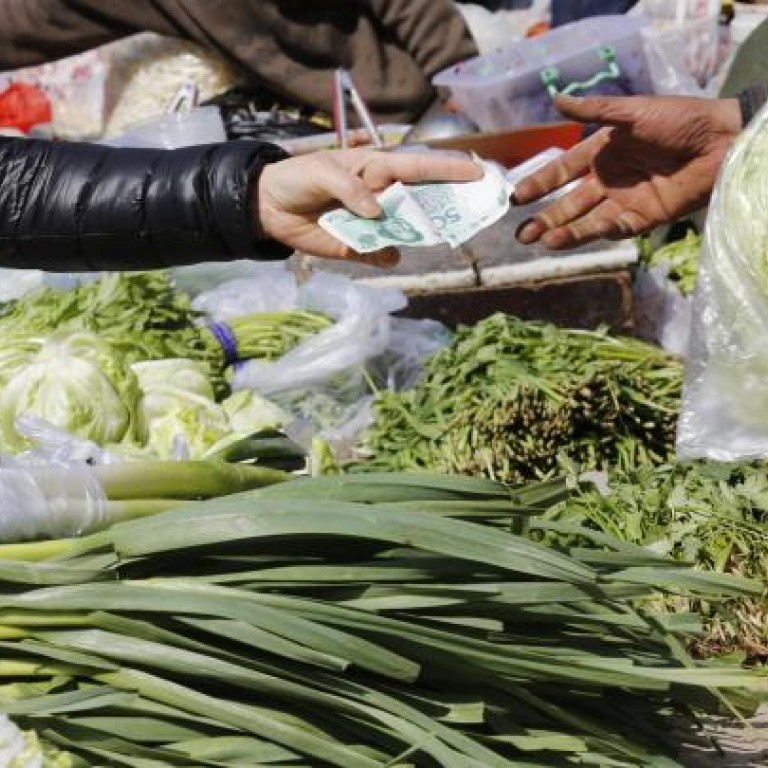
Slower food price rises cool inflation
Reduced pace of price increases may prove short-lived as pig deaths set to push cost of pork higher and workers' wages continue to rise
Inflationary pressures on the mainland fell last month as food price increases slowed, alleviating concerns over any imminent monetary policy tightening.
The consumer price index rose 2.1 per cent from a year ago, less than its 3.2 per cent gain in the first two months of the year, the National Bureau of Statistics said yesterday.

"The lower-than-expected CPI and PPI figures … leave policymakers more room to manoeuvre if activity data, to be released next week, surprise on the downside," said Song Yu, an economist at Goldman Sachs.
China is aiming to strike a balance between boosting economic growth, keeping inflation under control and containing financial risks, according to a government report released last month. The official target for CPI inflation this year is 3.5 per cent.
"Calling for imminent monetary tightening last month turned out to be premature, as inflation pressure is not high, growth momentum is not strong and external conditions are still volatile," said Lu Ting, an economist at Bank of America Merrill Lynch.
However, Lu warned that for the second half of this year and next year higher inflation was likely due to a reduced supply of pork and a steady progression of wage rises for migrant workers.
Pork prices fell 5.5 per cent last month from a year ago after thousands of pig carcasses floated down the Huangpu River through Shanghai, sparking fears of an animal disease outbreak.
An outbreak of blue-ear disease in 2007 killed tens of thousands of pigs and meant farmers were less willing to rear the animals, reducing the supply of pork and sending inflation soaring in 2008.
Consumer inflation fell 0.9 per cent from February, with food prices down 2.9 per cent, according to the statistics bureau.
That lower rate might be partly attributable to the central government's anti-graft campaign, which had reduced the price of dining out and the cost of food overall, Song said.
The mainland's PPI remained unchanged last month from February and declined more steeply year on year than in the first two months after Beijing cut petrol prices by 3.3 per cent and diesel prices by 3.5 per cent.
Lu Zhengwei, an economist at Industrial Bank in Shanghai, said the steeper year-on-year decline in the PPI was the result of sluggish demand from consumers and showed that many companies were still in difficulty.
Consumer inflation in the second quarter was expected to remain low because of seasonal factors and partly to depend on how the H7N9 bird flu outbreak developed as it might reduce demand for poultry, Lu said.
He expected the government's monetary policy stance to remain neutral in the April-June period, with no moves on interest rates or required reserve ratios for banks.
China's CPI was forecast to rise 3.2 per cent this year before higher labour costs and rising food prices pushed it to 3.5 per cent next year, the Asian Development Bank said yesterday.

